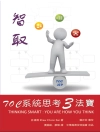This book examines the ways in which quality management methods, tools, and practices help improve an organization’s performance and achieve sustainable competitive advantages. This volume includes quality techniques and tools such as the EFQM Model, SERVPERF model, E-S-Qual scale and the ISO 9001 certification and provide a wide variety of empirical studies in different economic sectors.
In the current economic environment, characterized by economic turmoil and fierce competition, quality management has become a key strategy for organizations to overcome today’s challenges. Organizations benefits from implementing quality management systems by following two approaches. First, they implement quality practices aimed at ensuring customer satisfaction by considering consumer expectations and establishing strategies accordingly. Second, organizations improve processes by establishing efficient and effective process management systems that improve productivity, lower costs, reduce unnecessary expenses, eliminate all non-value added activities, and ultimately maximize excellence and customer satisfaction. Quality management thereby provides tools, techniques, and methods for continuous process improvement in both the professional and academic worlds, which, when implemented by organizations in times of crisis, enable more effective administration of activities undertaken by managers.
Containing contributions from various academics and scholars, this new book provides cutting edge research, methods and techniques providing a reference manual for academics, scholars, practitioners and policy-makers.
Innehållsförteckning
Chapter 1 Benefits of Implementing a System of Quality Management in Spanish Thalassotherapy Centres.- Chapter 2 Quality Certifications as a Hotel Selection Criterion.- Chapter 3 ’Q for Tourist Quality’ in the Spanish Tourist Sector.- Chapter 4 The ISO 9001 Standard in the Spanish Construction Industry.- Chapter 5 The EFQM Model as an Instrument to Legitimize Organizations.- Chapter 6 Integrated Management Systems.- Chapter 7 Integration of Information in Higher Education Institutions for Quality Evaluation.- Chapter 8 How Communication and Control Processes Improve Quality.- Chapter 9 An Application of the SERVPERF Model in a Sports Centre.- Chapter 10 Experience in Adapting E-S-Qual to Different Sectors or Settings.- Chapter 11 Excellence in Tourism Destinations.- Chapter 12 Tensions Raised by TQM Demand Upon Work Design in Technologically-Controlled Environments.- Chapter 13 The Influence of an Institutional Environment on Quality Management in Hotels.- Chapter 14 A New Paradigm in Planning and Management of Quality Hotel Services.












